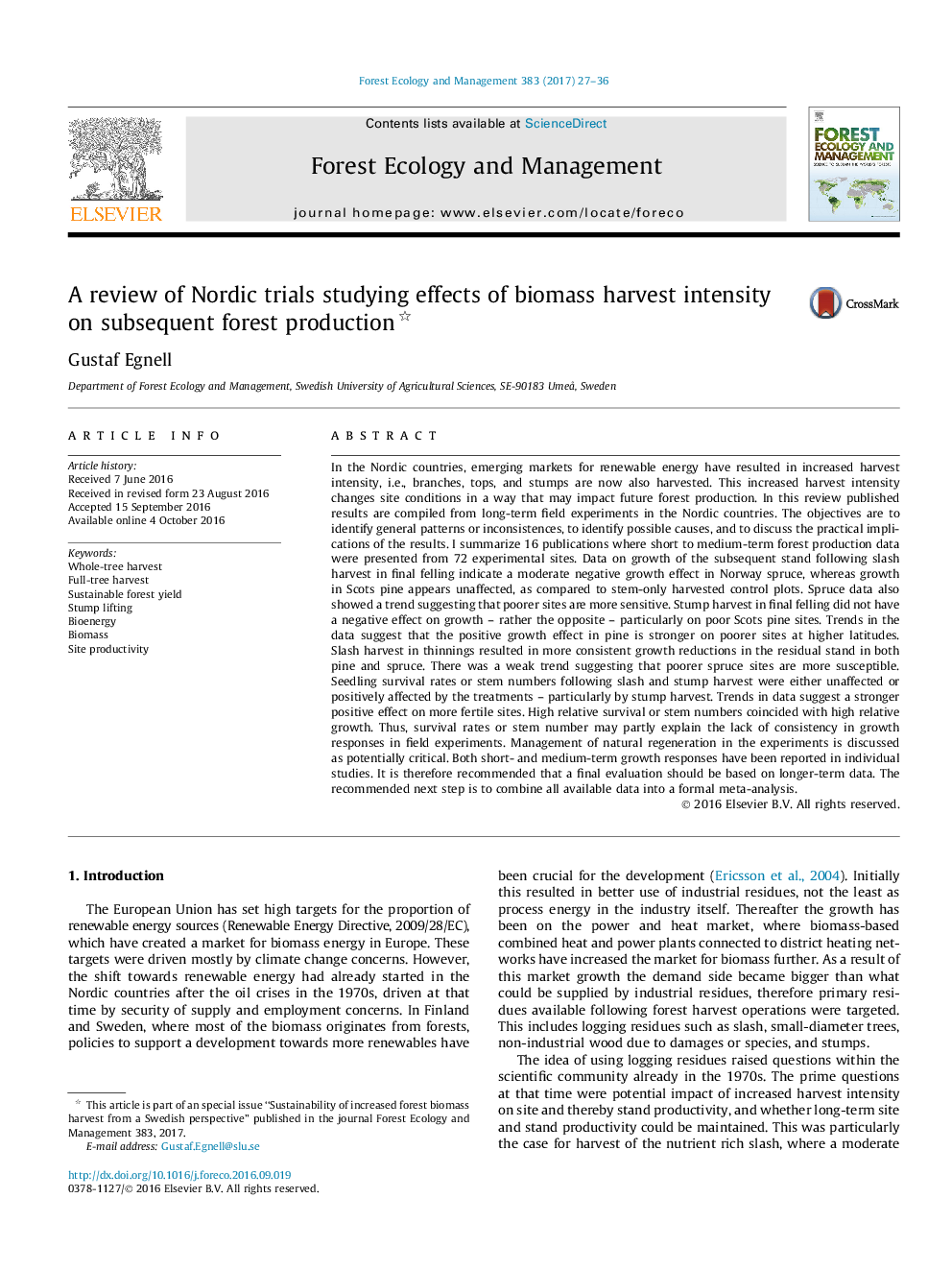| کد مقاله | کد نشریه | سال انتشار | مقاله انگلیسی | نسخه تمام متن |
|---|---|---|---|---|
| 6459593 | 1421375 | 2017 | 10 صفحه PDF | دانلود رایگان |
- Slash harvest in final felling tend to reduce growth in Norway spruce, but not in Scots pine.
- Slash harvest in thinning reduce growth in both Norway spruce and Scots pine.
- Poorer sites tends to be more susceptible in Norway spruce, but not in Scots pine.
- Stump harvest have no or rather a stimulating effect on forest growth.
- A positive relation between seedling survival/stem number and growth is critical for the interpretation of the results.
In the Nordic countries, emerging markets for renewable energy have resulted in increased harvest intensity, i.e., branches, tops, and stumps are now also harvested. This increased harvest intensity changes site conditions in a way that may impact future forest production. In this review published results are compiled from long-term field experiments in the Nordic countries. The objectives are to identify general patterns or inconsistences, to identify possible causes, and to discuss the practical implications of the results. I summarize 16 publications where short to medium-term forest production data were presented from 72 experimental sites. Data on growth of the subsequent stand following slash harvest in final felling indicate a moderate negative growth effect in Norway spruce, whereas growth in Scots pine appears unaffected, as compared to stem-only harvested control plots. Spruce data also showed a trend suggesting that poorer sites are more sensitive. Stump harvest in final felling did not have a negative effect on growth - rather the opposite - particularly on poor Scots pine sites. Trends in the data suggest that the positive growth effect in pine is stronger on poorer sites at higher latitudes. Slash harvest in thinnings resulted in more consistent growth reductions in the residual stand in both pine and spruce. There was a weak trend suggesting that poorer spruce sites are more susceptible. Seedling survival rates or stem numbers following slash and stump harvest were either unaffected or positively affected by the treatments - particularly by stump harvest. Trends in data suggest a stronger positive effect on more fertile sites. High relative survival or stem numbers coincided with high relative growth. Thus, survival rates or stem number may partly explain the lack of consistency in growth responses in field experiments. Management of natural regeneration in the experiments is discussed as potentially critical. Both short- and medium-term growth responses have been reported in individual studies. It is therefore recommended that a final evaluation should be based on longer-term data. The recommended next step is to combine all available data into a formal meta-analysis.
Journal: Forest Ecology and Management - Volume 383, 1 January 2017, Pages 27-36
